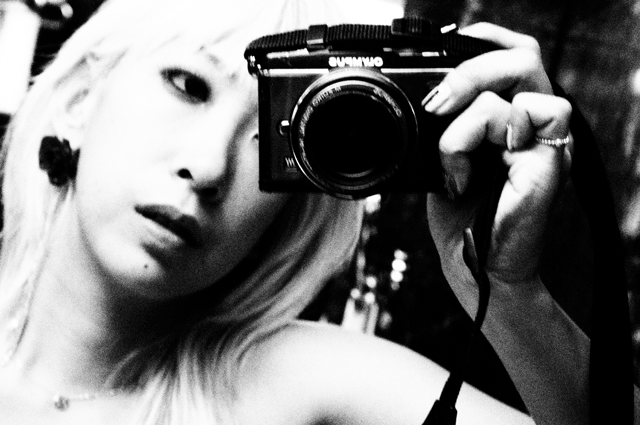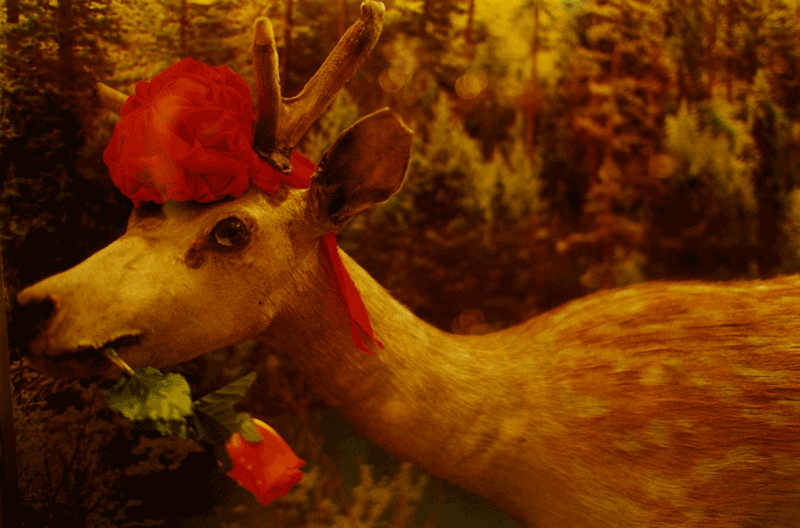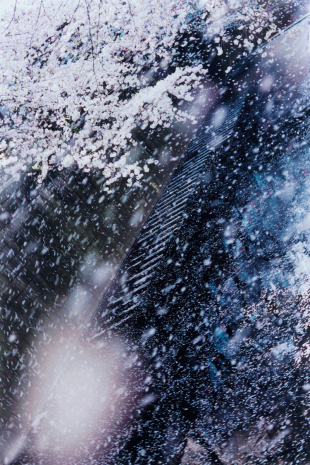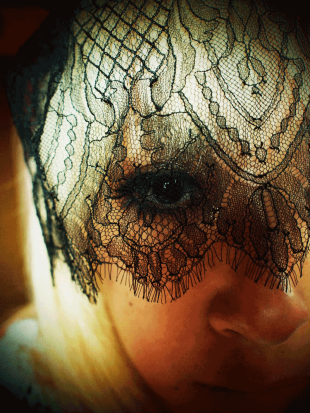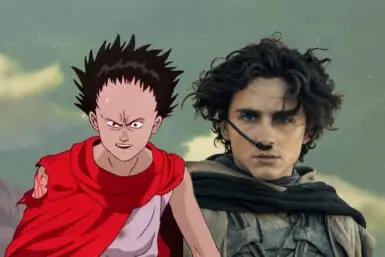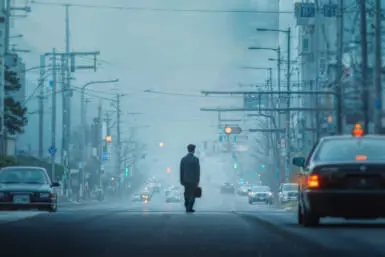The contrasting visions of one of Japan’s most celebrated photographers.
By Matthew Hernon
Born in Tokyo in 1972, Mika Ninagawa is one of the most vibrant photographers Japan has ever produced. The daughter of renowned theater director Yukio Ninagawa and retired actress Hiroko Ninagawa, she first burst on to the scene in the mid-nineties, producing vivid, ethereal photos that had an almost dreamlike quality to them. It may not have been to everyone’s liking, but her work, which used a variety of intense, seemingly contrasting palettes ranging from brilliant cobalt blues to voluptuous pinks, made her stand out as an artist.
By the end of the twentieth century she was no longer seen simply as the colorful young photographer with a famous father, but a talented professional in her own right. The Mika Ninagawa brand was expanding rapidly with her books and exhibitions attracting huge numbers. She also began garnering numerous accolades including the prestigious Kimura Ihei Photography Award, one of the country’s most celebrated photography awards, in 2001.
“…the vibrant colors on show in my photographs can sometimes mask my true emotions”
Her talent wasn’t just restricted to still photography either. She made promotional videos for a number of high profile artists including Alicia Keys (“Girl on Fire”) and AKB48 (“Heavy Rotation”). In 2007 she directed her first ever full length film. Entitled SAKURAN, it was widely praised by critics, bringing what Guardian critic Peter Bradshaw described as “an iconoclastic manga sensibility” to a “tragic story of a courtesan called Kiyoha.” She followed up that movie with her second full-length flick, Helter Skelter, five years later. A dark story about an actress with a scandalous secret, it proved an even bigger success, grossing more than 2.2 billion yen at the box office. It was also Japan’s most searched-for film online in 2012.
Currently one of the board members of the Tokyo Organizing Committee for the 2020 Olympic and Paralympic Games, Mika Ninagawa’s profile continues to grow. Over the next few months she will be displaying three of her books at the Hara Museum of Contemporary Art in Shinagawa. For those used to seeing her sparkling, almost psychedelic collections, noir, Self-image, and PLANT A TREE may come as somewhat of a surprise. On the surface the pictures appear to have a slightly more melancholic feel, though that isn’t necessarily the image that the 42-year-old is trying to portray, as she explained in a recent conversation.
Two Sides of the Same Coin
“I’ve become known for these bright pictures that are layered with colorful imagery. Some people, therefore, will view these books as a little darker than usual, but if you look at noir for instance, the photos are reminiscent of my established collections. Whilst they may appear different, they are fundamentally two sides of the same coin. The core element of what I’m trying to do in all my work can be seen in this book. When I’m taking pictures from a commercial perspective I look for unique elements and props to create a charming environment; however, the vibrant colors on show can sometimes mask my true emotions. noir reflects something deep inside my psyche.”
Glittering Images of Death
“One writer described noir as portraying “the glittering realm of life alongside the yawning abyss of death,” but I think the images go deeper than that. Sometimes life feels like an abyss, whereas death can be somewhat glittering and that is what I want to show in my pictures, including the cover shot of a deer taxidermy with a flower on it. We are surrounded by captivating images of death and artificiality, but a lot of the time aren’t aware of them. You could take goldfish as a case in point. They are kept in homes purely for observational purposes because they look cute. They are bred with other species and genetically modified to suit our own needs. The result of this is that they are dying much quicker than they used to. This kind of inhumane beauty is an important concept of my work.”
Sombre Sakura: The End of a Marriage
“PLANT A TREE was shot beside Meguro River during cherry blossom season on the actual day that I broke up with my husband. It was only shot using three rolls of film, but it remains an extremely important piece of work for me. I held the camera at a particular angle to give the scene a more sombre mood. Sakura is such a momentous flower for Japanese people that it evokes all kinds of emotions. Witnessing the petals dropping to the ground is a truly splendid sight, but at the same there is also something wistful about the whole situation that aptly reflected the way I was feeling at that time.”
Shooting from the Hip
“Self-image is a collection of nude self-portraits taken over the past two decades starting with my debut. I’m going back to where it began. For most of the pictures I used a tripod and shutter without seeing how I looked in the finder. It’s different from looking in a mirror or taking a selfie. I wanted to open up and try to express myself without actually seeing what I looked like. I come from quite an artistic family so I don’t feel shy or self-conscious being naked.”
The Naked Truth
“A lot of the time celebrities will choose to take off their clothes instinctively during a shoot because of the situation or location. I’m not usually the one who initiates it. With Yuko Oshima (AKB48), for example, we were at a nudist beach so it was natural for her to remove her bikini. The pictures are usually semi-nude and always very tasteful, certainly not what you would call obscene. The only one I have taken fully nude is Erika Sawajiri in Helter Skelter. I suggested that it would be better, from an artistic perspective, if she was naked for certain scenes. Being a true professional, she agreed as she knew it was for the benefit of the film.”
Behind the Silver Screen
“Erika (Sawajiri) and Anna Tsuchiya—the heroines in Ninagawa’s movies Helter Skelter and SAKURAN—are the two people I enjoyed working with most. When you are taking still shots of models, you usually only get to see their good side because your time together is so short, whereas with Erika and Anna I was meeting them everyday for a few months. This gave me an opportunity to see beyond the glitz and glamour. They are such powerful leading ladies on screen, it was then intriguing to see different sides to their characters away from the camera. It was an enjoyable experience and I hope to work with female actors again soon, particularly ones like Rie Miyazawa, Ko Shibasaki and Fumi Nikaidou. I would be interested in making another movie next year, but I would have to synchronize myself into the story 100%. I can’t do anything half-heartedly.”
A Lingering Shadow
“The fact that my father is a director didn’t add to the pressure on me when I was making SAKURAN and Helter Skelter. His background is predominantly in theater so he is essentially coming from a different line of work. At the beginning of my career everything I did got labeled as being from Yukio Ninagawa’s daughter. I needed to be quite resourceful in order to step out of his shadow and create a brand that could be powerful within itself. I think I’ve managed to do that and now my name is beginning to spread beyond Japan. I have made some progress in Asia, but I am determined to make an even bigger impression internationally. I think the next few years will be crucial in determining whether that is possible or not.”
You can see Mika Ninagawa: Self-image at the Hara Museum of Contemporary Art, Tokyo from January 24 to May 10, 2015. Please see the official website for more details.
www.haramuseum.or.jp
Main Image: Self-image, 2013 ©mika ninagawa Courtesy of Tomio Koyama Gallery

